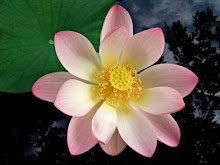Butterfly Milkweed, Chiggerflower, Milkweed, Pleurisy Root, Tuberous Swallowwort, Orange Swallow-wort, Yanagi-Towata
Habitat
(Asclepias tuberosa) Perennial herb native to N. America from S. Ontario and New York to Minnesota, south to Florida and Colorado. Found growing in dry open fields, along roadsides and grassy places. Cultivation: Butterfly Weed is easy, can be transplanted in fall or grown from seed, prefers a well-drained light, sandy, humus rich, or peaty soil in a sunny position. The root is spindle-shaped, large, branching, white, and fleshy with a knotted crown, it sends up several erect, stout, round and hairy stems, growing from 1 to 3 feet high. Stems are branched near the top and have corymbs or umbels of many deep yellow to dark orange, or almost red, flowers. The leaves grow closely all the way up the stem and are hairy, unserrated, lance shaped, alternate, sessile and dark green on top, lighter beneath.
Flowers bloom usually from June to September, followed in the fall by seed pods from 4 to 5 inches long containing the seeds with their long silky hairs or floss. This plant, unlike the other milkweeds, contains little or no milky juice. The seed pods are edible, cooked when young, harvest them before the seed floss forms. Harvest flowers in bloom, also edible cooked, said to taste like sweet peas. Leaves and new buds are edible cooked like spinach. Harvest root in fall and dry for later herb use.
Properties
Butterfly Weed is edible and medicinal. Asclepias tuberosa has a long history of use as a valuable alternative medicine and is one of the most important of the indigenous American species. The plant (above ground) is used mainly for food and clothing. The root is medicinal, it is antispasmodic, carminative, mildly cathartic, diaphoretic, diuretic, expectorant, tonic and vasodilator.
Butterfly Weed is used internally in the treatment of diarrhea, dysentery, chronic rheumatism, and as an expectorant. It has a specific action on the lungs, making it a valuable medicinal herb in all chest complaints and in the treatment of many lung diseases.
A warm infusion of the root exerts a mild tonic effect on the system. Caution is advised, as large doses of Butterfly Weed are emetic and purgative. A medicinal poultice of the roots is used in the treatment of swellings, bruises, wounds, and skin ulcers. The bark is used to make a quality fiber and woven into twine or cloth. The seed floss is used for stuffing in pillows and life jackets, candle wicks, and fibers to make cloth. Research indicates the floss is effective at cleaning up oil spills at sea.

Tidak ada komentar:
Posting Komentar